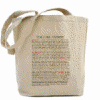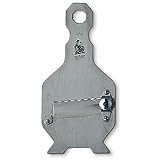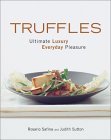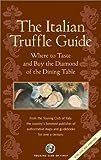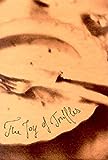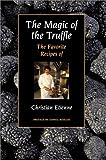truffles
ugly, stinky... delicious!
by Laura Pazzaglia
(return to food)
Their scent will attract the wrong kind of attention, their appearance will give the wrong kind of impression, and their flavor is unlike anything that could be expected. They bring a new palette of flavor to the table that can only be described by one�s own taste buds. Truffles are to the world of mushrooms what Gorgonzola is to the world of cheese.
In 1564, Dr. Alfonso Ciccarelli of Bevagna wrote a treatise entitled "DeTuberibus" dedicated to that most scent-ual of tubers, the truffle. The truffle's physical character obviously fascinated Pliny, who referred to it as a "callous under the earth". A Piemontese chef by the name of Giacomo Morra is credited with having been first to put truffles on the table.
For many, the word �truffle� conjures little chocolate spheres with a light dusting of cocoa. Few realize that this sweet is modeled after an ugly, pungent, misshapen mushroom, which sports a light dusting of dirt.
The Hunt
These hidden treasures live about a foot underground and must be �hunted� by a skilled truffle hunter and his partner. In France, they primarily train pigs while in Italy you�ll see dogs trained to sniff out truffles. These dogs are referred to by the Piemontese as tabui, which translates into "bastards" - probably a reference to the preferred non-purebred canines chosen to take on this task.
Early in the morning, the truffle hunters sneak into a forest with usually oak, but sometimes chestnut, hazel, beech or pine trees with their animal partner in tow � making sure that no one else follows them.
The size of the truffle can vary anywhere from 10 to 100 gram. Large truffles cost more because they are rare.
A kilo of truffles can cost $750 in Europe. By the time they hit the American market the price may be as high as $1,500.
Varieties
If you're shopping for fresh or dried truffles, you'll want to make sure that you note the latin name so that you don't pay a premium price for a sub-par truffles. There are many, many varieties of truffles, but here are the most popular. White truffles (the most expensive) generally come from the Piedmont and Umbria regions of Italy, black (expensive) from France, and gray (least expensive) can be found in North America.
| Name | Description | Season |
White Truffles
Tuber Magnatum Pico

|
White truffles are abundant in Alba (the most famous) and Monferrato, Piedmont, and around Parma, Modena and Bologna in Emilia Romagna and may be eaten raw.
|
mid-September - December
use within 10 days of harvest
|
Bianchetti Truffles
aka �the other white truffle�
aka Tuscan Truffle
Tuber Albidum Pico

|
This is the smallest of the truffles and are used frequently because they are similar to the White Truffle. Their taste is sharp, but when added to oil or butter, their flavor becomes very much like the prized White Truffle.
|
January - March
|
Black Winter ruffles
Melanosporum Vitt.

| These truffles are highly aromatic, pungent and will even penetrate eggs stored next to them, changing their taste. Black truffles must be cooked and should not be eaten raw. ,
|
mid-November to mid-March
use within 14 days of harvest
|
Black Summer Truffles
Tuber Aestivum Vitt.

|
Because of its thicker skin, the Summer Truffle lasts longer than both the White and Black Winter Truffle.
Since these truffles are also black in color, they are commonly referred to as Black Summer Truffles.
| May - early September
use within 21 days of harvest
|
Gray Truffles
aka American Truffles
tuber miesentericum
| Connoisseurs consider grey truffles found in North America unworthy of their attention- due to their lack of flavor and pungency.
|
use within 10 days of harvest
|
Fresh Truffles
Use truffles soon after purchase to take full advantage of the pungent aroma and taste. Store up to three days tightly wrapped in a sealed container in the refrigerator. If longer storage is necessary keep them buried in rice or in a sealed container alongside unwrapped butter or fresh eggs � the truffles' aroma will flavor the foods, making your investment more worthwhile. Brush loose dirt and dust off the surface before using.
Remove any soil from truffles just before eating. They must be washed with water and brushed. The outside must be immaculate since they will be used unpeeled. Dry with a paper towel.
Truffle Cooking
Truffles are scraped or grated onto food and into sauces and soups just before eating. Truffle slicers have been especially designed for this purpose. Experts recommend that veal, chicken, fish, souffl�s, omelettes, pasta, and rice can be glorified with thinly sliced truffles. Cream and cheese sauces avidly take up their flavor.
Insert thin wedges of truffle under the skin of a chicken and store it overnight in the refrigerator before roasting.
Some recipes call for peeling dark truffles; save the peel, which can be added to sauces and soups. White truffles are almost always eaten raw, usually shaved over pasta, rice, or eggs, while the more pungent black truffles are usually served cooked.
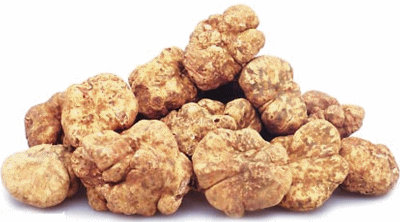
Here are some delicious truffle recipes from mine and my mother's collection:
Uova con Tartufi - Truffled Eggs
An after-the- theatre or midnight supper dish
4 fresh eggs
50-75 grams white truffles
salt
pepper
1 tbsp creme fraiche
Beat four eggs with a whisk in a heavy-bottom saucepan.
Slice 50-75 grams of fresh or canned white truffles and add to the eggs.
Season with salt and pepper.
Bring water in large saucepan to a boil and place the egg saucepan on this
water bath.
Stir the mixture constantly until it suddenly begins to thicken.
Remove from the water bath and add one tablespoon of cr�me fraiche.
Serve immediately together with slices of toast. A glass of red port wine
combines
nicely with this dish.
Risotto alla Piemontese
1 cup of risone (which is large, roundish rice)
4 cups of broth
50 g good cheese
50 g fresh butter
50 g white truffles, washed and cut into thin slices
nutmeg
salt and pepper
sauce from a roast
Put a good broth on to boil. Throw in some large, cleaned rice and cook it for 18 minutes on medium high. When it is almost done, season it with the cheese, fresh butter, white truffles, nutmeg, salt and pepper. Serve it in a soup terrine with a little sauce from a roast.
Lamb with Truffles
1 Thigh from a young lamb
120 grams black truffle crushed in a mortar
anchovies
1 lemons
1/10 litre olive oil
salt
Cut the lamb in large pieces and brown it in a casserole, add salt to taste
plus four anchovies with the spines removed and crushed in a mortar. Halfway
through the cooking (about half an hour) remove lamb for a moment and pour
out the fat accumulated in the pan. Add the juice of two lemons with a bit
of water. Continue to cook over a low fire, check after twenty minutes for
doneness, the meat near the bone should be tender and no longer pink, remove
from the flame and add the truffles, carefully turning the pieces of lamb to
mix. Cover the pot and let rest for ten minutes before serving.
Serves 4
Fettucine ai Funghi con Olio di Tartufi - Fettucine with Mushrooms and
Truffle Oil
1/2 ounce dried porcini mushrooms
3 or 4 dried morel mushrooms
1 cup vegetable stock or chicken broth, brought to a boil
5 shallots, chopped
3 garlic cloves, chopped
3 tablespoons butter
4 to 6 ounces fresh mushrooms of choice (oyster, shitakes, trompettes de
mort or horn of plenty, even cultivated mushrooms), thinly sliced
3 tablespoons extra virgin olive oil
6 ripe tomatoes, diced, or 1 basket cherry tomatoes, cut into halves
1/2 teaspoon chopped fresh rosemary, or a mix of rosemary and Italian parsley
Pinch salt
Tiny pinch sugar
1 cup dry white wine
4 tablespoons pesto
12 ounces dried fettuccine, or 1 pound fresh
Several generous shakes of truffle oil
Place porcini and morels in a bowl, wash them and then pour boiling stock
over them. Cover and rehydrate for about 30 minutes. Using a slotted spoon,
remove mushrooms and squeeze them over the bowl. Cut porcini into bite-size
pieces, and the morels into halves or quarters; set aside.
Stain soaking liquid through a cheesecloth- lined strainer. Discard grit at
bottom of pot.
Lightly saute shallots and half the garlic in 2 tablespoons of the butter.
Add sliced fresh mushrooms, cook a few minutes until they are just tender.
Add rehydrated mushrooms and cook a few moments. Transfer mushrooms to a
bowl and return pan to heat. Pour mushroom soaking liquid into pan and cook
over medium-high heat, letting it boil down to a reduced and intensely
flavored sauce; you should have only a few tablespoons. Pour this over
mushrooms.
Add a tablespoon of the olive oil to the pan and return to the heat. Add
the tomatoes and cook over high heat until they are warmed through and
slightly cooked. You do not want them to turn into a sauce -- they should
retain their fresh character. Stir in the remaining garlic, the rosemary,
salt and sugar. Add the tomatoes to the mushrooms.
Pour wine into pan and boil down to a few tablespoons; add to mushrooms
tomatoes.
Mix the pesto with the remaining olive oil, then smear the mixture around
the edges of the serving plates.
Cook the pasta until it is al dente; drain. Toss the hot pasta with the
mushroom and tomato sauce and the remaining tablespoon of butter, and
sprinkle with truffle oil. Mound a portion of the pasta in the center of
each plate.
Insalata di petto di pollo all'uva bianca e tartufo - Savory salad with
breast of chicken white grapes and truffles
1 Breast of roasted or boiled chicken
1\2 radicchio
4 leaves curly lettuce
1 small bunch of rucola
4 tablespoons olive oil
4 tablespoons balsamic vinegar
4 teaspoons
truffle pate'
16 white grapes
Cut the various salad vegetables in a julienne, place in the center of the
plate. Cut the breast of chicken into sticks, place over the salad.
Peel and split the grapes, removing seeds, distribute over the salad. Mix
the balsamic vinegar first with salt to taste, then add the extra virgin olive
oil, mix well with a fork or whisk to emulsify, fold in the truffle pate'
and pour over the salad.
Realted Articles:


